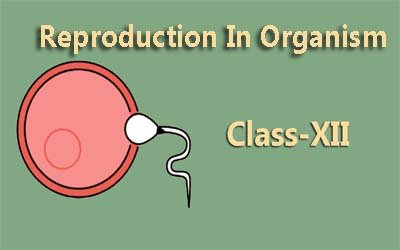Molecular Basis of Inheritance - Class 12
The molecular basis of inheritance refers to the study of how genetic traits are passed down from parents to offspring. It explains how the information encoded in an organism's DNA directs the development and function of its offspring. The key molecules involved in the molecular basis of inheritance are: DNA (Deoxyribonucleic acid): DNA is the genetic material that contains the instructions for building and maintaining an organism. It is a double-stranded molecule that stores information in a code made up of four nucleotide bases: adenine (A), guanine (G), cytosine (C), and thymine (T). RNA (Ribonucleic acid): RNA is a single-stranded molecule that plays several roles in the transfer of genetic information. There are three main types of RNA: messenger RNA (mRNA), ribosomal RNA (rRNA), and transfer RNA (tRNA). Messenger RNA (mRNA): mRNA carries the genetic information from DNA to the ribosomes, where proteins are made. Ribosomal RNA (rRNA): rRNA is the major component of ribosomes, which are the sites of protein synthesis. Transfer RNA (tRNA): tRNA molecules transfer amino acids to the ribosomes during protein synthesis. Proteins: Proteins are the building blocks of cells and tissues. They are made up of amino acids linked together in a specific order determined by the sequence of nucleotides in DNA. The central dogma of molecular genetics describes the flow of genetic information from DNA to RNA to protein: DNA replication: During DNA replication, the DNA molecule is copied to produce two identical daughter DNA molecules. This process ensures that each new cell has a complete copy of the genetic information. Transcription: In transcription, the information from a gene in DNA is copied into a complementary mRNA molecule. The mRNA molecule carries the genetic information to the ribosomes. Translation: In translation, the information in mRNA is used to synthesize a protein. The ribosomes read the mRNA codons (triplets of nucleotides) and link together amino acids to form a protein. উত্তরাধিকারের আণবিক ভিত্তি বলতে পিতামাতার কাছ থেকে বংশধরদের মধ্যে জিনগত বৈশিষ্ট্যগুলি কীভাবে প্রেরণ করা হয় তার অধ্যয়নকে বোঝায়। এটি ব্যাখ্যা করে যে কোনও জীবের ডি. এন. এ-তে এনকোড করা তথ্য কীভাবে তার বংশধরদের বিকাশ এবং কার্যকারিতা নির্দেশ করে। উত্তরাধিকারের আণবিক ভিত্তির সাথে জড়িত মূল অণুগুলি হলঃ ডি. এন. এ (ডিঅক্সিরাইবোনিউক্লিক অ্যাসিড) ডি. এন. এ হল একটি জিনগত উপাদান যা একটি জীব গঠন ও রক্ষণাবেক্ষণের জন্য নির্দেশাবলী ধারণ করে। এটি একটি ডাবল-স্ট্র্যান্ডেড অণু যা চারটি নিউক্লিওটাইড ঘাঁটি নিয়ে গঠিত কোডে তথ্য সঞ্চয় করেঃ অ্যাডেনিন (এ) গুয়ানিন (জি) সাইটোসিন (সি) এবং থাইমিন। (T). আর. এন. এ (রাইবোনিউক্লিক অ্যাসিড) আর. এন. এ হল একটি একক-আটকে থাকা অণু যা জিনগত তথ্য স্থানান্তরের ক্ষেত্রে বিভিন্ন ভূমিকা পালন করে। প্রধানত তিন ধরনের আরএনএ রয়েছেঃ মেসেঞ্জার আরএনএ (এমআরএনএ) রাইবোসোমাল আরএনএ (আরআরএনএ) এবং ট্রান্সফার আরএনএ। (tRNA). মেসেঞ্জার আর. এন. এ (এম. আর. এন. এ) এম. আর. এন. এ ডি. এন. এ থেকে রাইবোসোমে জিনগত তথ্য বহন করে, যেখানে প্রোটিন তৈরি হয়। রাইবোসোমাল আরএনএ (আরআরএনএ) আরআরএনএ হল রাইবোসোমের প্রধান উপাদান, যা প্রোটিন সংশ্লেষণের স্থান। ট্রান্সফার আরএনএ (টিআরএনএ) টিআরএনএ অণু প্রোটিন সংশ্লেষণের সময় রাইবোসোমে অ্যামিনো অ্যাসিড স্থানান্তর করে। প্রোটিনঃ প্রোটিন হল কোষ এবং টিস্যুগুলির বিল্ডিং ব্লক। এগুলি ডি. এন. এ-তে নিউক্লিওটাইডের ক্রম দ্বারা নির্ধারিত একটি নির্দিষ্ট ক্রমে একত্রে সংযুক্ত অ্যামিনো অ্যাসিড দ্বারা গঠিত। আণবিক জিনতত্ত্বের কেন্দ্রীয় মতবাদ ডিএনএ থেকে আরএনএ থেকে প্রোটিনে জিনগত তথ্যের প্রবাহ বর্ণনা করেঃ ডিএনএ প্রতিলিপিঃ ডিএনএ প্রতিলিপির সময়, ডিএনএ অণু দুটি অভিন্ন কন্যা ডিএনএ অণু তৈরি করতে অনুলিপি করা হয়। এই প্রক্রিয়াটি নিশ্চিত করে যে প্রতিটি নতুন কোষে জিনগত তথ্যের একটি সম্পূর্ণ অনুলিপি রয়েছে। প্রতিলিপিঃ প্রতিলিপিতে, ডি. এন. এ-তে একটি জিন থেকে তথ্য একটি পরিপূরক এম. আর. এন. এ অণুর মধ্যে অনুলিপি করা হয়। এম. আর. এন. এ অণু রাইবোসোমে জিনগত তথ্য বহন করে। অনুবাদঃ অনুবাদে, এমআরএনএর তথ্য একটি প্রোটিন সংশ্লেষ করতে ব্যবহৃত হয়। রাইবোজোমগুলি এমআরএনএ কোডন (নিউক্লিওটাইডের তিনগুণ) পড়ে এবং অ্যামিনো অ্যাসিডগুলিকে একত্রিত করে একটি প্রোটিন গঠন করে।
English
Last updated
Wed, 27-Nov-2024



















